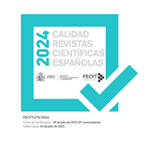Challenges in multi-language pronunciation teaching: A cross-linguistic study of Chinese students’ perception of voiced and voiceless stops
Resumen
This article reports on a cross-linguistic study of 58 Chinese students’ perception of voiced and voiceless stops in their third language (L3). The participants were Japanese, Russian, or Spanish major students in a Chinese university, who were beginner learners of these languages but who had all learned English as their second language (L2) for over 10 years. The purpose of this study was to investigate the L3 learners’ perceptual differences in the stop categories, and analyze the effects of the learners’ multi-language background on their perception of L3 stops. Results from the perception experiment showed that: 1) the value and range of voice onset time (VOT) play an essential role in Chinese students’ perception of voiceless stops; and 2) the pre-voicing during closure is the key to Chinese students’ perception of voiced stops. We attribute their difficulty in perceiving L3 voiceless stops to the similarity in the phonemic range of voiceless stops between the learners’ L3 and their L1 and L2, as this leads to confusion in perception. On the other hand, the dissimilarity between L3 voiced stops and those of L1 and L2 is conducive to the students’ perception of L3 voiced stops. Findings from this study provide empirical evidence for the effect of similarity and dissimilarity in speech sounds as proposed in earlier phonology acquisition theories, and they can also inform the pedagogy of multi-language education.
Descargas
Descarga artículo
Licencia
La revista Círculo de Lingüística Aplicada a la Comunicación, para fomentar el intercambio global del conocimiento, facilita el acceso sin restricciones a sus contenidos desde el momento de su publicación en la presente edición electrónica, y por eso es una revista de acceso abierto. Los originales publicados en esta revista son propiedad de la Universidad Complutense de Madrid y es obligatorio citar su procedencia en cualquier reproducción total o parcial. Todos los contenidos se distribuyen bajo una licencia de uso y distribución Creative Commons Reconocimiento 4.0 (CC BY 4.0). Esta circunstancia ha de hacerse constar expresamente de esta forma cuando sea necesario. Puede consultar la versión informativa y el texto legal de la licencia.











